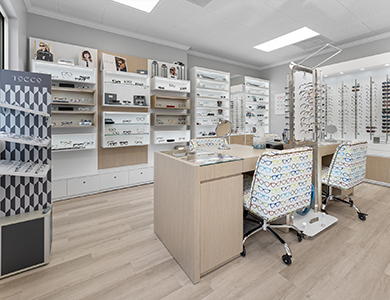Presbyopia, sometimes referred to as age-related presbyopia, is the normal worsening of vision with age, especially near vision. As you approach middle age, the lenses in your eyes begin to thicken and lose their flexibility. The ability of the lens to bend allows our eyes to focus on objects at varying distances (accommodation). The loss of this ability means that vision gets worse and objects cannot be brought into focus. This typically becomes noticeable some time around age 40 when you realize that you have to hold a book or newspaper farther from your face to focus on it.
What causes presbyopia?
Presbyopia is a natural part of aging. As you grow older, the lenses in your eyes thicken. They lose their elasticity, and the muscles surrounding the lenses weaken. Both these changes decrease your ability to focus, especially on near objects. The changes take place gradually, though it may seem that this loss of accommodation occurs quickly.
What are the symptoms?
The main symptom of presbyopia is blurred vision, especially when you do close work or try to focus on near objects. This is worse in dim light or when you are fatigued. Presbyopia can also cause headaches or eyestrain.
How is it treated?
Eyeglasses with bifocal or progressive addition lenses (PALs) are the most common correction for presbyopia. Reading glasses are another choice. Unlike bifocals and PALs, which most people wear all day, reading glasses are typically worn just during close work. There are several types of contact lenses that are avaiable for people with presbyopia also.
Surgical options for the correction of presbyopia also exist. Because the field of vision correction surgery is changing rapidly, ask your eye doctor for the latest information about surgery for presbyopia
Because changes in the lens of your eye continue as you grow older, your eye doctor will prescribe a stronger correction for near work as you need it.




